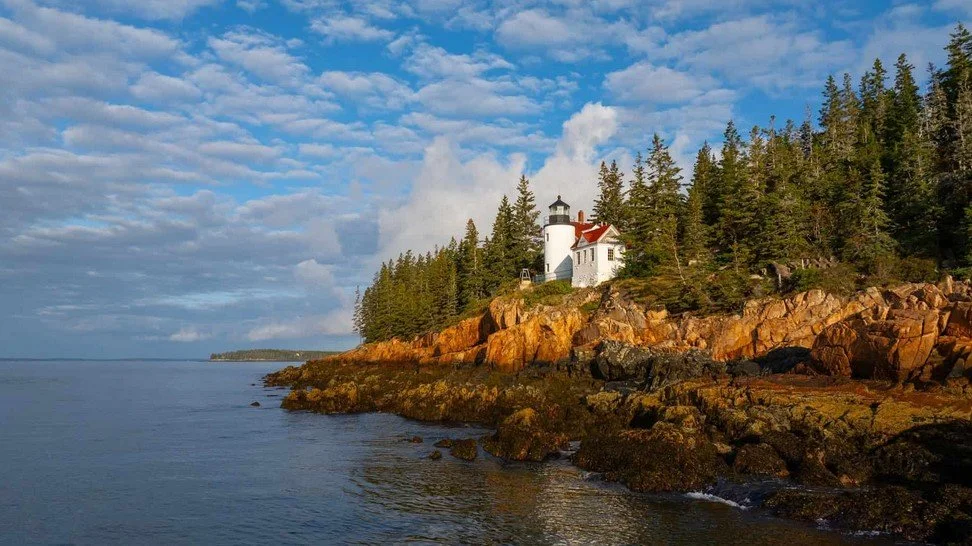homestate maine
By Ben Everidge for Thomas
Photo Credit: Visit Maine
maine at the Crossroads: 10 Issues That Define the pine tree state’s Future
“Maine’s rugged coast and independent spirit still define it, but beneath the postcard images lies a harsher reality: the nation’s oldest state is running out of workers, affordable homes, and time to adapt to a changing climate.”
- Ben Everidge
Maine is a state of rugged beauty and fierce independence, with a long tradition of split-ticket voting and pragmatic politics. Known for its rocky coastlines, lobster industry, and small-town values, the Pine Tree State faces mounting challenges: an aging population, rural decline, climate risks, and the struggle to balance tradition with modernization. With independent voters and leaders playing outsized roles, Maine’s future will reflect whether independence can still deliver solutions in a polarized age.
1. The 2026 Governor’s Race and Political Crosscurrents
Governor Janet Mills’ tenure has highlighted Maine’s balancing act between progressive policies and pragmatic governance. Republicans remain competitive, and independents have a history of winning high office. The 2026 governor’s race will test whether Maine leans further left, shifts back toward the GOP, or charts another independent path.
2. Aging Population and Workforce Shortages
Maine has the oldest median age of any U.S. state. Healthcare, education, and trades face acute worker shortages, while younger residents often leave for opportunities elsewhere. Efforts to attract immigrants and new families are underway; however, the demographic imbalance remains one of Maine’s most significant long-term challenges.
3. Housing Affordability and In-Migration
Remote work and pandemic-era migration brought new residents, driving up home prices and rents in coastal and rural communities. Long-time Mainers find themselves priced out of housing markets reshaped by out-of-state residents. Balancing growth with affordability and protecting community character is a top political issue.
4. Fishing, Lobster, and the Maritime Economy
Maine’s iconic lobster industry faces threats from climate change, warming waters, and federal regulations aimed at protecting endangered species. Fisherman argue their livelihoods are at stake, while environmental groups push for stricter protections. The future of Maine’s maritime economy is a battleground between tradition and sustainability.
5. Climate Change and Environmental Vulnerability
Sea level rise, coastal erosion, and stronger storms threaten Maine’s coastline. Inland, forests face pests and shifting ecosystems. While Maine has embraced renewable energy and climate action plans, local resistance to wind and solar projects complicates progress. The state’s identity as a natural paradise hangs in the balance.
6. Healthcare Access and Rural Challenges
Rural hospital closures and physician shortages plague Maine, leaving many communities without reliable care. Costs remain high despite efforts to expand access. Mental health and addiction treatment are especially strained, feeding into broader social challenges.
7. Education and Youth Retention
Maine’s small schools face challenges, including declining enrollment, teacher shortages, and funding pressures. Colleges and universities provide opportunities, but many graduates leave the state. Building pathways for young people to stay and thrive in Maine is central to its long-term vitality.
8. Energy, Power Costs, and Regional Dependence
Maine has some of the highest electricity costs in New England, mainly due to its reliance on imported power. Debates rage over hydropower from Canada, offshore wind, and local solar projects. Energy affordability and independence are key issues for both households and businesses.
9. Political Identity and Independent Tradition
Maine has produced prominent independents, such as Senator Angus King, and has a long tradition of voters who reject strict party affiliation. Ranked-choice voting, adopted statewide, reinforces this independent streak. Whether independents continue to hold influence, or get swallowed by national partisan battles, will define Maine’s civic future.
10. Rural Economy and Small-Town Survival
Beyond Portland and Bangor, many rural towns face shrinking populations, weak job markets, and aging infrastructure. Tourism and seasonal industries provide some lifelines, but without new investment, rural Maine risks long-term decline. Bridging the urban-rural divide is perhaps the state’s most formidable challenge.
The Thomas Take
Maine is a state that defies easy labels: fiercely independent, deeply traditional, yet increasingly shaped by national trends it cannot ignore. Its lobster boats, forests, and towns symbolize resilience, but demographic decline, climate risk, and affordability crises press hard against its future. If Maine can harness its independent streak to find pragmatic solutions, it may once again prove that small states can punch above their weight in shaping America’s direction.
To learn more about Maine’s issues, read:

